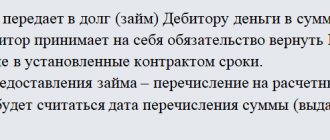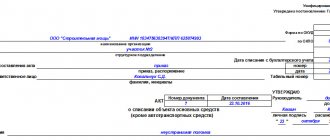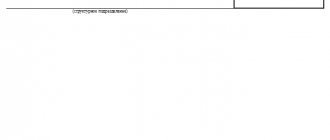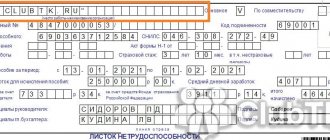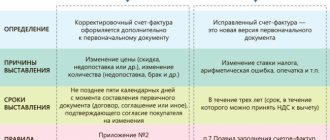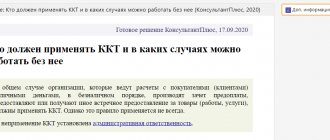Drawing up a Statement of Reconciliation of Mutual Settlements is usually necessary in the case when two legal entities need to certify transfers made between each other. Most often, such reconciliations are made for specific contracts or invoices; reconciliations are also possible for contracts for a certain time period. It is worth noting that despite the fact that this document is not binding and is created only by mutual agreement of the parties, it is widespread in all areas of activity and is used by most organizations.
- Form and sample
- Free download
- Online viewing
- Expert tested
FILES
How is reconciliation carried out?
This procedure can be carried out only for one of the following items: name or number of the product, contract, specific delivery, certain period of time. For this document to be reliable, it should be drawn up either after the last transfer or from the moment of delivery. In addition, it is convenient to carry out reconciliation during the annual inventory of the company’s funds and property. Quite often, the results of such checks reveal debts: receivables or payables. If such facts are confirmed, you need to immediately make a reconciliation report and send it to the partner organization.
How to make a reconciliation report in 1C 8.3 Accounting
Where can I find the reconciliation report in 1C 8.3? Reconciliation of settlements is documented using the document Reconciliation of settlements with counterparties in the section Purchases – Settlements with counterparties – Reports of reconciliation of settlements – Create button.
The organization entered into an agreement for the supply of kitchen furniture with CLERMONT LLC.
On January 10, kitchen furniture was received in the amount of RUB 1,416,000.
On February 1, the organization repaid the debt for the supply of furniture dated January 10.
On February 15, kitchen furniture was received in the amount of 590,000 rubles.
On February 22, the organization paid for the delivery of furniture dated February 15 and transferred an advance payment for the next delivery in the amount of 295,000 rubles.
Let's look at how to generate a reconciliation report in 1C using this example.
Reconciliation period
The period and counterparty with which the reconciliation is carried out are filled in the header of the document Statement of reconciliation of settlements with counterparties . Let's take a closer look:
- From - date of generation of the reconciliation report with the counterparty;
- Counterparty - a buyer, supplier or other counterparty with whom settlements are reconciled;
- Agreement is a document according to which settlements with the counterparty are carried out.
The agreement is indicated only if it is necessary to reconcile settlements with the counterparty under a specific agreement. If the field is not filled in, then reconciliation is carried out for all contracts of the counterparty.
- Period —period of reconciliation of mutual settlements. It is for this period that the data will be displayed in the tabular section.
You can also reconcile settlements with the counterparty and its separate divisions in one act; for this you need to:
- select the parent organization in the Counterparty ;
- select the With separate divisions .
Learn more using the example of Purchasing goods from a separate division with delivery costs included in their price
Settlement accounts for which reconciliation is carried out
After filling in the counterparty, you must also indicate the accounting accounts for which settlements with the counterparty will be analyzed. This must be done on the Accounts by checking the required boxes.
If you need to add another account that is not shown in the default tabular section, then you need to use the Add . In this case, one of the sub-accounts in the added account should be Counterparties and Agreements , if the reconciliation is also carried out under a specific agreement. Otherwise, the data for this account will not be filled in automatically.
Conducting reconciliation of settlements with the counterparty
After setting the necessary settings, fill out settlements with the counterparty on the tabs According to the organization , According to the counterparty .
This can be done in several ways:
- manually using the Add ;
- Automatically fill in the data in the database using the Fill .
In this case, you can fill out immediately:
- by our organization and counterparty;
- or only according to our organization.
If you select By our organization and counterparty , both tabs will be filled in ( According to organization data and According to counterparty data ).
If you select Only according to our organization , then the According to the counterparty data must be filled in manually or by clicking the Fill , but already on the According to the counterparty data .
Let's take a closer look at filling out the columns on the According to organization data and According to counterparty data :
- Date - the date of the business transaction (receipt, sale, payment, etc.). Filled in with the date of the source document.
- Document - a link to the primary document in the database.
- Presentation - a brief description of a business transaction, in brackets - the date, number of the primary document (incoming or outgoing data of the primary document). It is this data that ends up in the printed form of the Reconciliation Report . Read more about displaying the full names of documents in printed form Reconciliation report.
- Debit - the amount reflected in debit;
- Credit - the amount reflected on the loan.
In the footer of the document the following is displayed:
- Balance at the beginning - final mutual settlements with the counterparty as of the starting date specified in the Period . In our example, Receipt dated January 10, 2018 in the amount of RUB 1,416,000 . did not fall within the reconciliation period, so the unpaid amount is reflected in this field.
- Closing balance - final mutual settlements as of the end date specified in the Period . In our example, an advance payment is made against future supplies in the amount of 295,000 rubles; because it is not closed as of 02/28/2018, then it is displayed in this field.
- Discrepancy with the counterparty (Difference with the organization) - must be equal to “0”. If there is an amount in this field, it means that some data is missing in the database. Perhaps the payment was not posted or they forgot to enter the receipt (sale) document. What to do if errors were made in settlements with the counterparty and the reconciliation report turned out to be incorrect?
After filling out and checking the data, the Reconciliation Report must be agreed upon or transferred to the counterparty for approval:
- in paper form, for this you need to print it. More details on how to print a reconciliation report in 1C?
- in electronic form, for this you can: send directly from 1C using the More button - Send by email. Learn more about how to set up email in 1C;
- save the printed form to your computer and send it via external email.
Rules for drawing up the act
There is no unified, standard form for drawing up an act, so it can be written in free form or according to a template developed at the enterprise. A regular A4 sheet is suitable for filling.
The act must be printed in two copies - one for each of the interested parties.
Both signed and completed copies are sent to the counterparty, whose specialists compare the information from the sent report with the data they have. If there are no objections to the financial transfers specified in the act, all the information matches, then the counterparty signs the documents and returns one copy and keeps the second one.
If necessary, the act can be certified with a seal, but since 2021, the presence of a seal for legal entities is not a legal requirement (however, without a seal, in the event of legal proceedings, the document may be considered invalid).
To ensure that the process of signing the reconciliation report does not drag on, when sending the document you should indicate the time frame within which it must be returned.
Filling procedure
For the act of reconciliation of mutual settlements, the form is not approved by government agencies; it can be developed independently. In one of the most common accounting programs - 1C, the reconciliation report of mutual settlements is filled out automatically, according to the documents entered into the program; you only need to indicate the counterparty and the reconciliation period, as well as the accounting account (if accounting was kept by agreement, you can display calculations separately for each agreement or for all together as a whole for the counterparty). The period is chosen arbitrarily; it is more convenient when it coincides with the tax or reporting period - for example, a quarter or a year. You can download the reconciliation report below.
What is indicated:
At the top (“header” of the document):
- between whom the reconciliation is made - the names of the counterparties and responsible persons;
- reconciliation period;
- the agreement under which the transactions were carried out;
- date of.
Many people do not indicate the place of completion, this is acceptable, but from the point of view of document management, it is more correct to indicate where the act was drawn up.
We provide an act of reconciliation of mutual settlements, a sample filling out for 2019, at the end of the article.
Below in the text of the act, or in a special table, accounting indicators are described, namely:
- settlement balance at the beginning and end of the period, turnover for the period;
- names of transactions, numbers and dates of primary documents with amounts for them.
In conclusion it states:
- final record of the presence/absence of debt and in favor of whom, if any;
- Positions are indicated, signatures and full names are provided. persons who signed the act.
Since it is not necessary for an organization (IP) to have a seal, the seal does not need to be affixed; if there is, it is better to certify the document with it.
First, the person filling out the form enters all their data and prints it out.
After signature, the document is transferred to the second party. The counterparty checks the entered indicators, fills out its side of the act (sometimes, if there are no discrepancies, the counterparty simply signs the act, but it is more correct to completely fill out all the columns).
If discrepancies are identified, the primary documents are raised and their indicators are checked (for example, if there is a difference in the amount of the invoice, prices and quantities, the total total must be checked). Missing duplicates and copies of documents are requested. After resolving disagreements, it is recommended to draw up an updated reconciliation report.
Purpose of drawing up the act
If the information in the document drawn up by the initiator of the reconciliation does not coincide with that available from its counterparty, then the existing discrepancies should be recorded at the end of the document. The same applies to debts: if such facts are revealed, it is necessary to indicate the period during which they should be repaid. Otherwise, the court, if a claim arises, will not be able to take into account the argument regarding the violation of the terms of money transfers.
According to the law, an act of reconciliation of mutual settlements may be grounds for interrupting the three-year limitation period. That is, in cases where the debtor signs a reconciliation report within three years, he is considered to have recognized his debt obligations and is obliged to repay them within the established time frame.
It happens that during the period that has elapsed since the signing of the contract and the fulfillment of obligations, the counterparty has been declared bankrupt. In such situations, accounts payable after a certain time can be written off as expenses of the organization.
What is it for?
The act of reconciliation of mutual settlements is an accounting document that reflects:
- movement of products (works, services) and funds between two counterparties for a certain period;
- the presence or absence of debt of one party to the other on a certain date.
The act is not a primary document because it does not confirm the fact of payment of funds to another person, and its use does not in any way change the financial position of the parties. Essentially, this is a technical document, the use of which in most cases is a voluntary initiative of the accountant.
It is recommended to be used in the following situations:
- long-term cooperation with regular supplies of goods or services;
- concluding several contracts with one partner or drawing up additional agreements to existing contracts;
- provision by the supplier of deferred payment;
- transfer by the buyer of a large amount of prepayment (advance payment) in conditions of regular deliveries;
- very high cost of goods;
- The subject of the contract is a wide range of products.
It is also compiled during the annual or situational inventory of calculations.
In this situation, it is important to understand that debts to debtors and creditors are reflected in the accounting in the amount that is recognized by the enterprise itself as correct on the basis of contracts, orders of managers and primary documents confirming the movement of goods and money. There is no need to send reconciliation statements to all your debtors and creditors to ensure that the amounts match. Moreover, on their basis it will not be possible to make any accounting entries, including adjusting the amount of debt.
An exception is made only for settlements with the budget and banks, which need to be confirmed (clause 74 of the Accounting Regulations).
If for management purposes it is extremely important to oblige your partner to exchange such acts, this procedure, its frequency and penalties for non-compliance must be spelled out in the contract.
If you are interested in how to create a shift schedule, check out this material. Why is it necessary and how is an agreement for the provision of paid services with an individual concluded? Read here.
Instructions for filling out the reconciliation report
In the “header” you need to enter information about the period for which the reconciliation report is being carried out, and also indicate the agreement that served as the basis for the creation of this document. Here you should enter the name of the companies in accordance with the constituent documents (you can without such details as KPP, INN, OGRN, etc.).
The second part of the document includes a table in which each party enters information contained in its accounting records for transfers under the agreement in question or for a certain period of time. They must match completely. Under the table, each company enters its existing debt. This data must also be the same. If there are no debts, this must be noted in writing.
In conclusion, the document must be signed by the heads of the enterprises, with the obligatory indication of positions and a transcript of the signatures. A document drawn up in accordance with all the rules of office work, if signed by the directors of the enterprises, acquires legal force.
Who fills out and signs the act
Filling out reconciliation acts is usually the responsibility of the accountant who manages this area: for suppliers - the employee who receives the primary documents for deliveries, for buyers and customers - the one who writes off goods and materials for sale. After filling out and signing the act, it is handed over to the second party to enter their data.
The completed document must be signed by representatives of both parties. Who exactly depends on the purpose of the reconciliation:
- For the purpose of confirming settlements between organizations (IP) and accounting - by the heads of the parties and/or chief accountants.
- For others - for example, to substantiate a claim or go to court, acts of reconciliation of mutual settlements with counterparties must be signed by managers, individual entrepreneurs personally or authorized representatives with confirmation of their authority. Moreover, for a representative of an individual entrepreneur, the power of attorney must be notarized. When signing, you must receive (or attach) certified copies of documents confirming your right to sign.
This signing procedure is not approved by law; as a general rule, the manager is responsible for the state of accounting, and it is he who has the right, as the sole executive body of the organization, to sign any documents on behalf of the company, however, in business practice they are guided by the options outlined.
The form “Act of Reconciliation of Mutual Settlements” and a sample design are given below.
Read also: Reconciliation with the tax office
How to print a reconciliation report in 1C
Click the Print button – Document reconciliation report Act of reconciliation of settlements with counterparties . The printed form is divided into two parts (with data on our organization and the counterparty) and will include transaction amounts, turnover and final balances. PDF
How to display the full name of a document in printed form Reconciliation report
The names of documents in printed form can be displayed in two forms:
- short name - “Payment (258 from 02/01/2018)”;
- full name - “Write-off from current account (258 dated 02/01/2018)”.
To display the full name, you must check the Display full names of documents on the Additional .
How to display invoices in a reconciliation report
To display invoices in the Reconciliation Report , you must select the Display invoices on the Additional .
How to indicate contracts in a reconciliation report
To display contracts in the Reconciliation Report , you must select the Split by contracts on the Additional .
If the reconciliation is carried out with the main counterparty (HC) and its separate subdivisions (SB), then the Split by contracts must be set carefully: there may be a doubling of turnover if there was an adjustment to mutual settlements (Payment from the SB, delivery from the SB or vice versa).
How to indicate in the reconciliation report the responsible persons signing it
Let's look at how to fill out a printed form for the reconciliation report so that it automatically indicates the responsible persons of our organization and the counterparty who sign the reconciliation report.
In the 1C program, a reconciliation report was drawn up between our Organization and CLERMONT LLC. It is necessary to indicate in its printed form the full names of the managers signing the reconciliation report:
- Druzhnikov G.P. - from the Organization;
- Vasiliev S.S. - on the part of CLERMONT LLC.
In the printed form of the Reconciliation Report, the full name and position of the representatives of the parties are filled in according to the data in the Additional in the Representatives of the Parties .
This data is automatically filled in when creating a document; if necessary, you can change it manually.
If you are a commercial subscriber of the BukhExpert8 - Rubricator 1C Accounting system, you can learn more about filling out responsible persons in documents:
- Indication of responsible persons of the organization in printed forms of documents
- Indication of responsible persons of counterparties in printed forms of documents
In the printed form of the Reconciliation Report , we will see the data on the representative of the counterparty LLC CLERMONT in two places: in the text of the act and at the bottom of the act - where the counterparty’s seal is affixed.
If the counterparty's representative on the Additional , then the data on it will not appear in the printed form.
In order not to redo the document, you can enter the full name of the counterparty’s representative in the empty field by hand.
How to display a facsimile signature and seal of an organization in a reconciliation report
To display the facsimile signature of the manager and the seal of the organization, you must specify the Signature and seal on the command line of the printed form of the Reconciliation Report .
See also: Workshop on working with signatures and seals on documents


